
Introduction
The moon has always held a special place in human culture and imagination. From werewolves to space exploration, the moon has inspired countless stories, myths, and legends. But beyond its cultural significance, the moon plays a crucial role in our daily lives, affecting everything from the tides to our sleep patterns. In this guide, we’ll explore the science behind the moon’s phases, provide a detailed explanation of each phase, and discuss the importance of understanding the moon’s cycles.
The Science Behind the Moon’s Phases

The moon’s phases occur due to its position in relation to the sun and the Earth. Understanding the science behind the moon’s phases can help us appreciate this celestial body’s beauty and significance.
How the moon orbits around the Earth
The moon orbits around the Earth in an elliptical path. It takes approximately 29.5 days for the moon to complete one orbit around the Earth, which is known as a lunar month. The moon’s orbit is also slightly tilted relative to the Earth’s orbit around the sun, which results in the moon passing above or below the Earth’s shadow.
The role of the sun and the Earth’s shadow in the moon’s phases
The sun plays a significant role in the moon’s phases. As the moon orbits around the Earth, the sun’s light illuminates different parts of the moon, creating the phases we observe. The amount of sunlight that reaches the moon depends on the moon’s position relative to the sun and Earth.
When the moon is positioned between the sun and Earth, we observe a new moon. During this phase, the moon is not visible from Earth since it is in the sun’s shadow. As the moon moves away from the sun, it enters a waxing phase, where the amount of visible light on the moon’s surface gradually increases until we observe a full moon. As the moon moves farther away from the sun, it enters a waning phase, where the amount of visible light on the moon’s surface gradually decreases until it becomes a new moon once again.
The different types of lunar eclipses
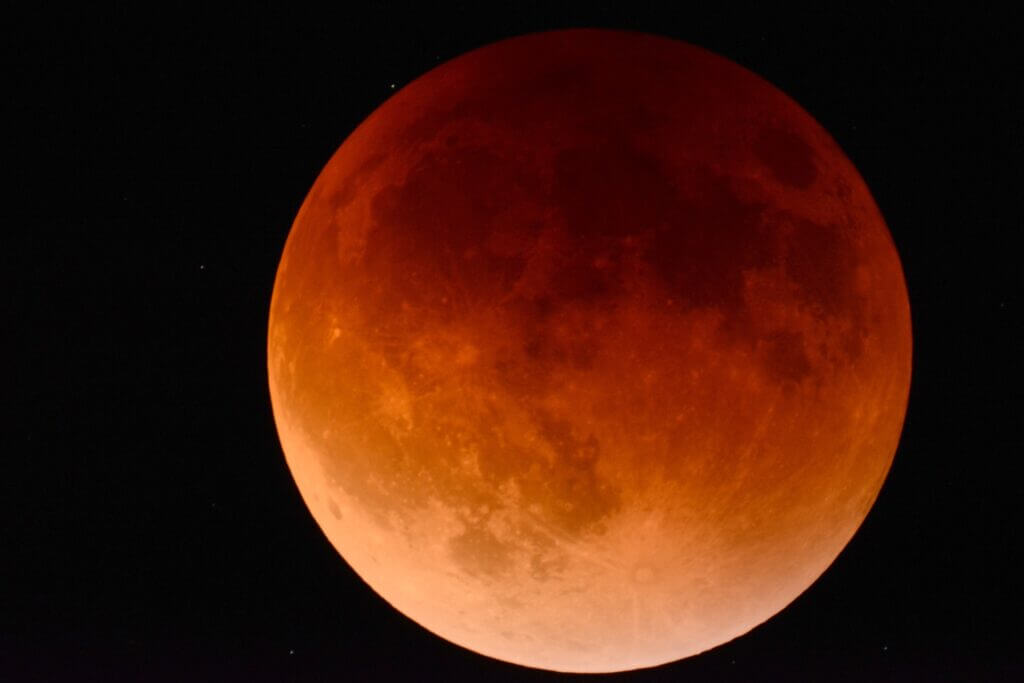
A lunar eclipse occurs when the moon passes through the Earth’s shadow. There are three types of lunar eclipses:
- Total Lunar Eclipse – During a total lunar eclipse, the moon passes entirely through the Earth’s shadow, causing it to appear reddish-brown. This is known as a blood moon.
- Partial Lunar Eclipse – During a partial lunar eclipse, only a part of the moon passes through the Earth’s shadow, causing it to appear partially darkened.
- Penumbral Lunar Eclipse – During a penumbral lunar eclipse, the moon passes through the outer part of the Earth’s shadow, causing it to appear slightly darker than usual.
Understanding the science behind the moon’s phases and eclipses can help us appreciate the moon’s beauty and significance.

The Different Phases of the Moon
The moon’s phases are the result of its orbit around the Earth. As the moon moves in its orbit, it is illuminated by the sun, and we see different portions of its surface. There are eight primary phases of the moon: New Moon, Waxing Crescent, First Quarter, Waxing Gibbous, Full Moon, Waning Gibbous, Third Quarter, and Waning Crescent.
The Importance of Understanding the Moon’s Phases
Understanding the moon’s phases can be incredibly useful for a variety of reasons. For example, knowing when the Full Moon is coming can help you plan outdoor activities or events. Similarly, understanding the moon’s effect on the tides can be essential for sailors, fishermen, and beachgoers. Additionally, understanding the moon’s cycles can help you appreciate the beauty of the night sky and deepen your connection to the natural world.
Overall, the moon’s phases are fascinating and important to understand. In the following sections, we’ll dive deeper into the science behind the moon’s phases, explore each phase in detail, and discuss the moon’s influence on Earth.
The Moon’s Phases Explained
The moon’s phases occur as it orbits around the Earth. As the moon moves around our planet, different parts of it become illuminated by the sun, and this creates the distinct phases that we observe. There are eight primary phases of the moon, each with its unique characteristics and appearance.
New Moon
The new moon is the first phase of the lunar cycle, and it occurs when the moon is positioned between the sun and the Earth. From our vantage point on Earth, the side of the moon facing us is in shadow, and we cannot see any illumination. During this phase, the moon rises and sets with the sun and is not visible in the night sky.
Our article on The New Moon – An Astronomical Marvel Explored provides a comprehensive examination of this phase.
Waxing Crescent

The waxing crescent phase occurs when the moon is moving away from the new moon phase and beginning to reflect more sunlight. During this phase, the illuminated portion of the moon appears as a thin crescent shape in the sky. Waxing crescent moons are visible in the western sky shortly after sunset and set a few hours after.
First Quarter

The first quarter moon occurs when the moon has completed roughly a quarter of its orbit around the Earth. During this phase, half of the moon’s illuminated side is visible from Earth, creating a semicircle in the sky. The first quarter moon is visible in the afternoon and evening sky, and it sets around midnight.
Waxing Gibbous

The waxing gibbous phase occurs as the moon moves toward the full moon phase. During this phase, the illuminated portion of the moon appears as a large semicircle shape in the sky, with only a small portion remaining in shadow. Waxing gibbous moons are visible in the eastern sky after sunset and remain visible throughout most of the night.
Full Moon
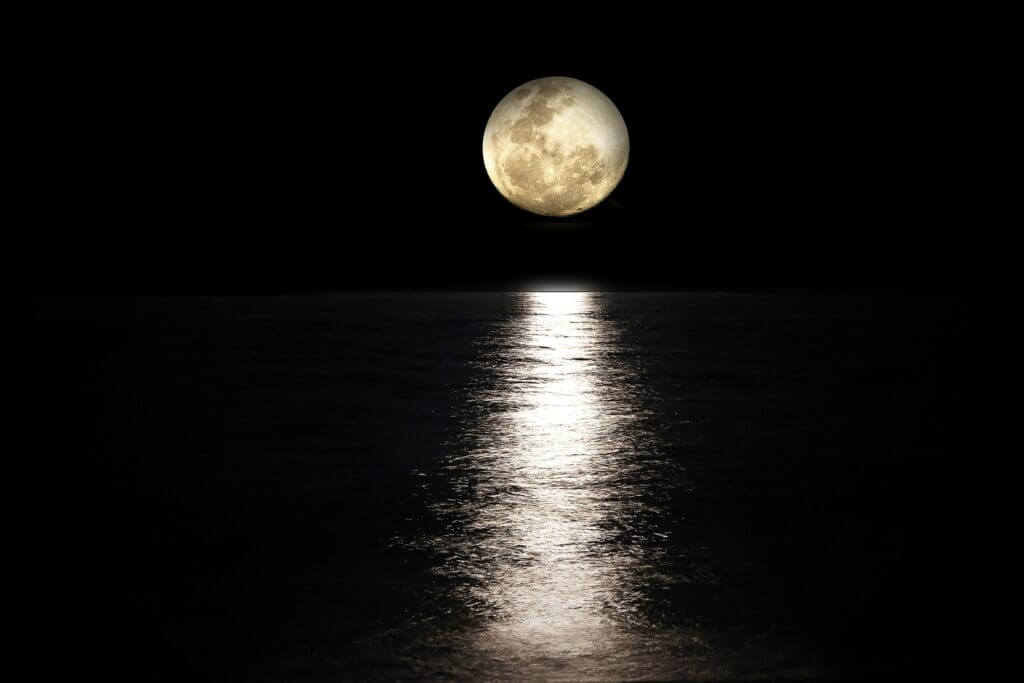
The full moon occurs when the moon is on the opposite side of the Earth from the sun, and its entire illuminated side is visible from Earth. The full moon is the brightest and most easily recognizable phase of the lunar cycle. Full moons are visible all night long and are often the subject of cultural celebrations and folklore.
Waning Gibbous
The waning gibbous phase occurs as the moon moves away from the full moon phase and begins to reflect less sunlight. During this phase, the illuminated portion of the moon appears as a large semicircle shape in the sky, with only a small portion remaining in shadow. Waning gibbous moons are visible in the western sky after sunset and remain visible throughout most of the night.
Third Quarter
The third quarter moon occurs when the moon has completed roughly three-quarters of its orbit around the Earth. During this phase, half of the moon’s illuminated side is visible from Earth, creating a semicircle in the sky that is opposite to that of the first quarter moon. The third quarter moon is visible in the late evening and early morning sky and sets around dawn.
Waning Crescent
The Waning Crescent moon is the final phase before the New Moon. It appears as a thin crescent, similar to the Waxing Crescent, but with the illuminated portion of the moon decreasing each night. During this phase, the moon rises just before dawn and sets in the late morning or early afternoon.
Overall, each phase of the moon offers a unique viewing experience and provides insights into the moon’s orbit and relationship with the Earth and the sun. Whether you’re observing the moon for scientific research, cultural reasons, or simply for the joy of stargazing, understanding the different phases of the moon can enhance your experience and appreciation of the night sky.
Observing and Photographing the Moon’s Phases
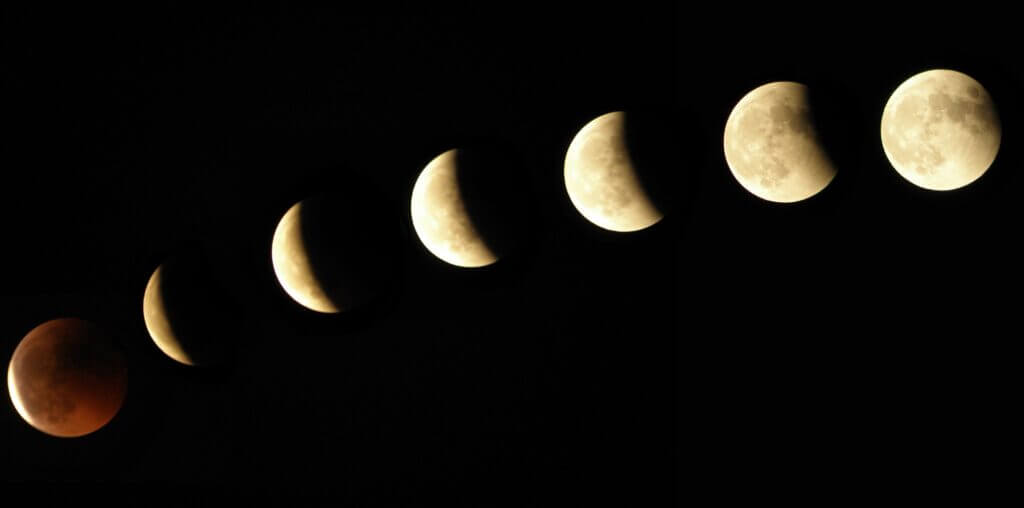
Observing the moon’s phases can be a fascinating and rewarding experience. Here are some tips for observing the moon and photographing its phases:
Tips for Observing the Moon
- Find a dark location with an unobstructed view of the sky. Light pollution can make it difficult to see the moon’s details.
- Use a telescope or binoculars to get a closer look at the moon’s surface features.
- Look for shadows and craters on the moon’s surface during the waxing and waning gibbous phases, as they tend to stand out more during these phases.
- Observe the moon at different times of the day and night to see how the moon’s appearance changes with the angle of the sun’s light.
- Use a moon map or smartphone app to identify the moon’s features and keep track of the moon’s phase.
Equipment Needed for Photographing the Moon’s Phases
- Camera: A digital single-lens reflex (DSLR) camera or a mirrorless camera is recommended for capturing high-quality images of the moon’s phases.
- Lens: A telephoto lens with a focal length of at least 200mm is ideal for capturing close-up images of the moon’s surface details.
- Tripod: Use a sturdy tripod to keep the camera steady and avoid camera shake.
- Remote Shutter Release: A remote shutter release or self-timer can be used to avoid camera shake caused by manually pressing the shutter button.
- Filters: A neutral density filter can be used to reduce the moon’s brightness and prevent overexposure. A polarizing filter can be used to enhance the moon’s surface features.
Best Times and Locations for Moon Watching and Photography
The best time to observe and photograph the moon’s phases is during the waxing and waning gibbous phases when the moon’s features are most visible. The full moon can also be an excellent opportunity to capture detailed images of the moon’s surface, although the bright light can make it more challenging to capture details.
For photography, try to find a location with a clear and unobstructed view of the sky. A dark location away from light pollution is best, but you can also experiment with capturing images of the moon against urban landscapes or city skylines for a unique perspective.
Remember, observing and photographing the moon’s phases takes practice and patience. Keep experimenting with different techniques and equipment to find what works best for you.
Incorporating the above tips and techniques into your observation and photography of the moon’s phases can enhance your experience and appreciation of our celestial neighbor.

The Moon’s Influence on Earth
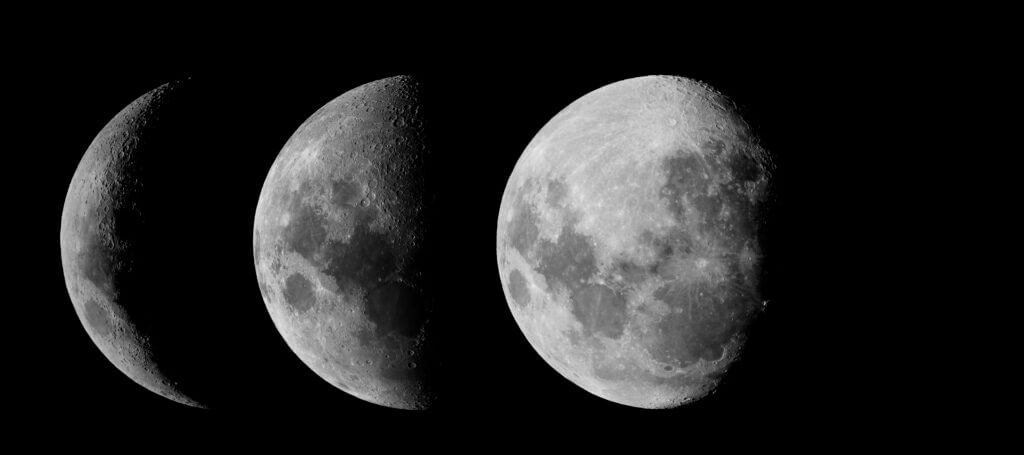
The moon’s phases not only impact the way we view the night sky but also have a significant influence on our planet. In this section, we’ll explore the various ways in which the moon affects Earth and its inhabitants.
The Tides and Their Connection to the Moon’s Phases
The gravitational pull of the moon on the Earth’s oceans causes the tides to rise and fall in a regular pattern. This gravitational pull is strongest during the full and new moon phases, resulting in higher tides known as spring tides. During the first and third quarter phases, the gravitational pull of the moon and sun counteract each other, resulting in lower tides known as neap tides.
The tides play an essential role in coastal ecosystems, affecting everything from marine life to shoreline erosion. Understanding the relationship between the moon’s phases and the tides is crucial for activities such as fishing, boating, and beachcombing.
Lunar Calendars and Cultural Significance of the Moon’s Phases
For centuries, various cultures have used the moon’s phases to mark time, from the Chinese lunar calendar to the Islamic Hijri calendar. The moon’s phases also play a significant role in religious celebrations, such as Ramadan and the Chinese Moon Festival.
In addition to its practical applications, the moon’s influence on human culture is evident in everything from literature to music. The phases of the moon have inspired artists for centuries, from the Romantic poets to Pink Floyd’s “Dark Side of the Moon.”
Folklore and Myths Associated with the Moon
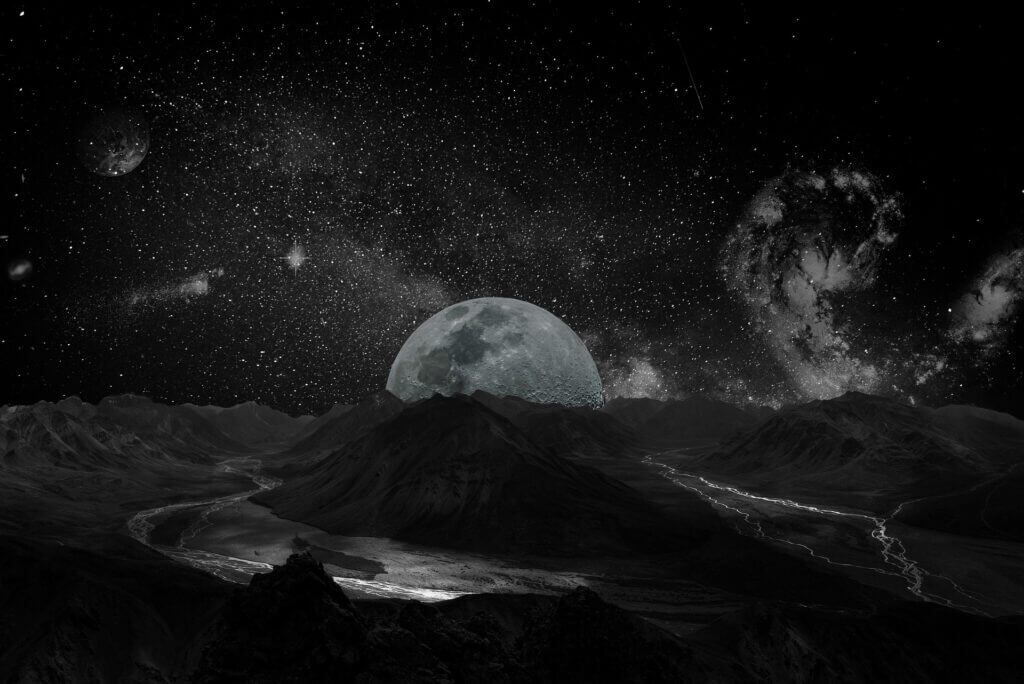
The moon’s phases have long been the subject of myth and folklore. From werewolves to the moon goddesses worshipped in ancient cultures, the moon has played a central role in the stories we tell about the world around us.
In many cultures, the full moon is associated with fertility and new beginnings. In others, it is a symbol of death and darkness. Regardless of the specific beliefs, the moon’s phases continue to captivate us and inspire our imaginations.
Overall, the moon’s influence on Earth is vast and far-reaching. From the tides to cultural celebrations and folklore, the moon’s phases continue to impact our lives in ways we may not even realize. By understanding the science behind the moon’s phases and the ways in which they affect our planet, we can gain a deeper appreciation for this celestial body and its importance in our world.
Final Thoughts and Encouragement for Further Exploration
As we wrap up this guide, we encourage you to continue exploring the moon and its phases. Whether you’re an avid skywatcher or simply curious about the world around you, there’s always more to discover about the moon and its impact on our lives.
If you’re interested in observing the moon, we recommend finding a dark location away from light pollution and using a telescope or binoculars for the best view. You can also experiment with photographing the moon’s phases using a DSLR camera and a tripod.
Furthermore, if you’re interested in learning more about the cultural significance of the moon, we recommend exploring different lunar calendars and traditions from around the world. You might also enjoy reading about the folklore and myths associated with the moon, which have played a significant role in human culture throughout history.
In conclusion, the moon’s phases are an essential part of our world and have influenced our culture and traditions for centuries. We hope that this guide has provided you with a comprehensive understanding of the moon and its phases and has inspired you to continue exploring the wonders of the universe.
Recommended Reading
The New Moon – An Astronomical Marvel Explored
Recommended Software – LunarPhase Pro
LunarPhase Pro is a comprehensive software toolkit designed for moon observers, offering a wide range of features and tools to enhance your lunar observing sessions. Whether you’re an amateur astronomer, teacher, photographer, hunter, or simply fascinated by the moon, this software provides valuable information and predictions about lunar phases, moon visibility, and more. It caters to various interests and professions, including military personnel, gardeners, researchers, astrologers, and stockbrokers.
With LunarPhase Pro, you can easily plan your observing sessions, track moon phases past, present, or future, and explore detailed moon maps in both 2D and 3D. The software provides data at a glance, including current moon phase, moon visibility, rise/set times, and lunar eclipses. It also offers features like lunar libration, constellation information, and a vast database of over 9,200 lunar features. Whether you’re a beginner or an advanced observer, LunarPhase Pro is a valuable tool for discovering and understanding Earth’s nearest neighbor, the moon.


